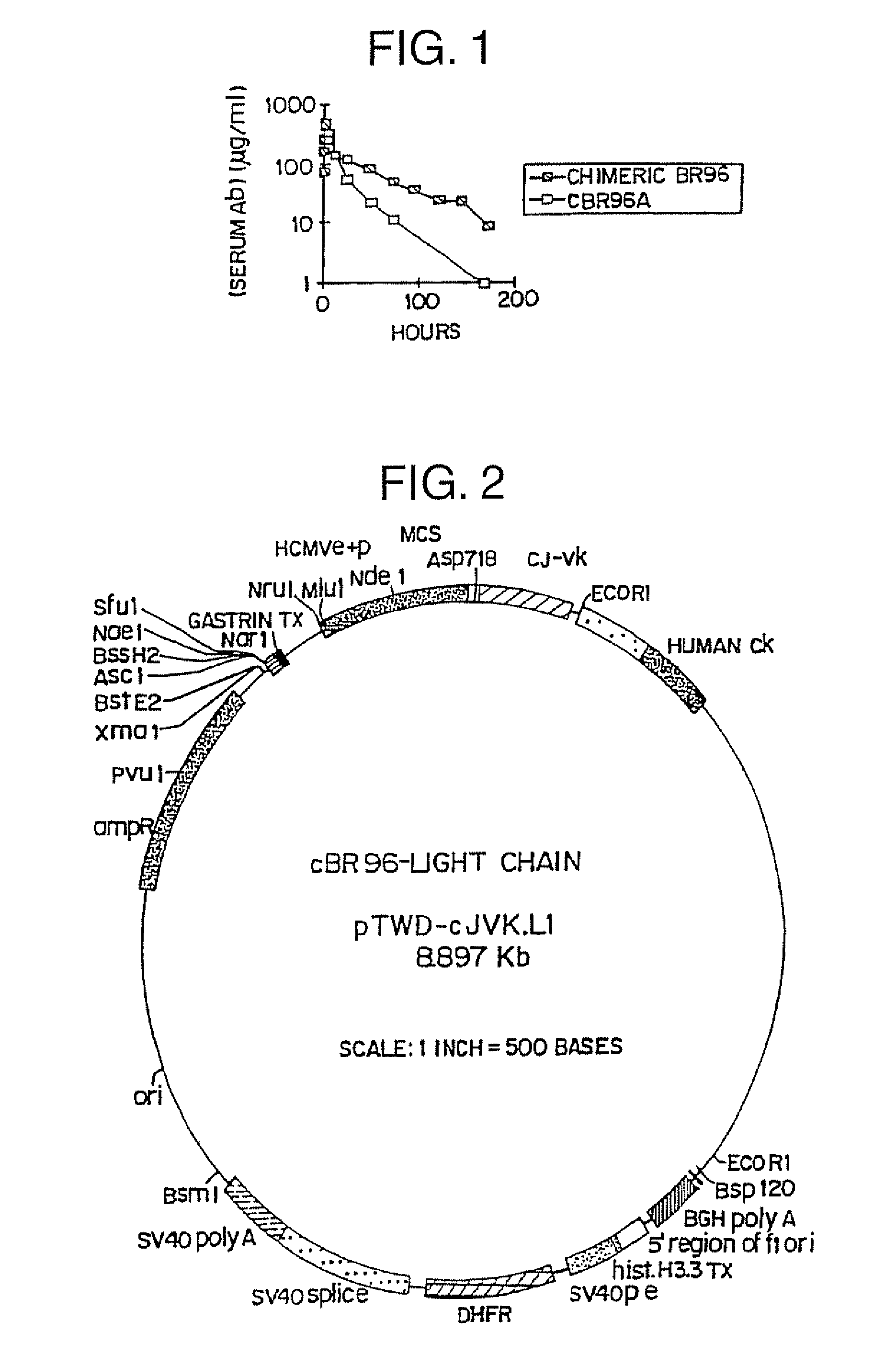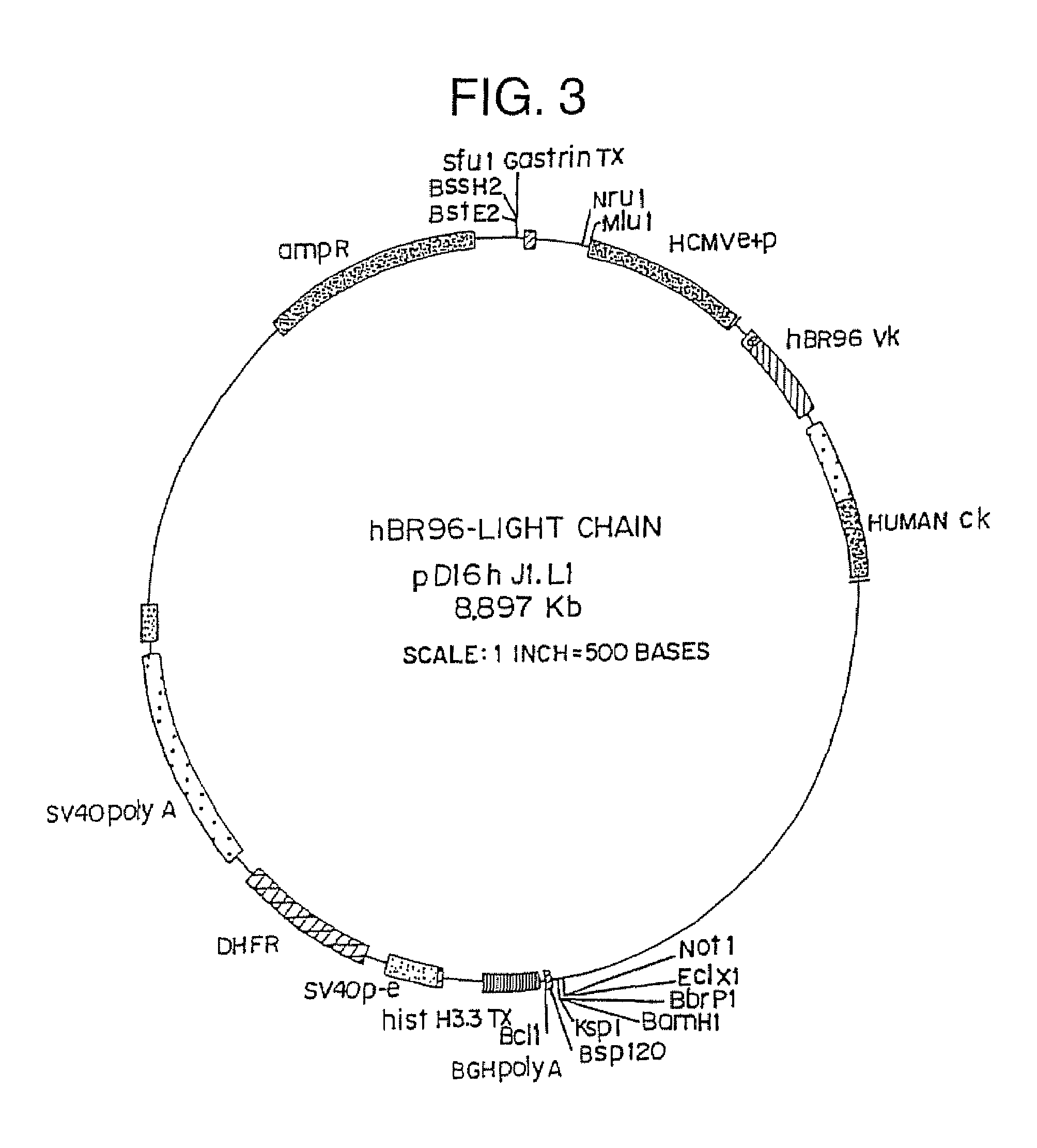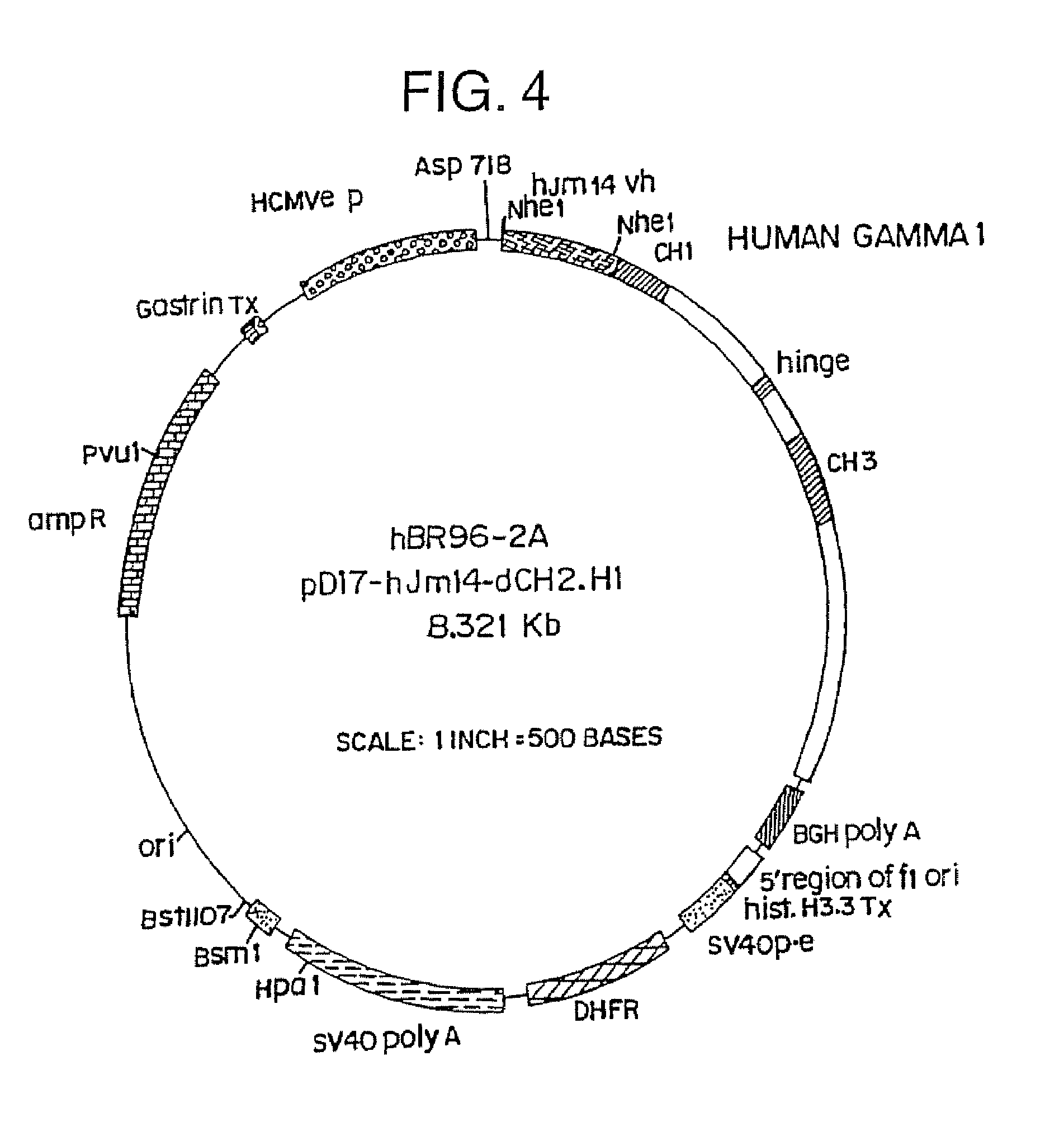Method for inhibiting immunoglobulin-induced toxicity resulting from the use of immunoglobulins in therapy and in vivo diagnosis
- Summary
- Abstract
- Description
- Claims
- Application Information
AI Technical Summary
Benefits of technology
Problems solved by technology
Method used
Image
Examples
example 1
[0142]The following standard ELISA protocol was used.
[0143]Materials: Immulon2 96 well plates and Genetic Systems Specimen Diluent Concentrate (10×); antibody conjugate was Goat Anti Human Kappa-HRP Mouse Adsorbed, Southern Biotech. at 1:10,000 in Genetic Systems Conjugate Diluent (1×); Genetic Systems EIA Chromogen Reagent (TMB) (1:100); Genetic Systems EIA Buffered Substrate (1×); plate coat antibody or antigen were AffiniPure F(ab′)2 Fragment Goat Anti Human IgG Fc Fragment specific (Jackson Immuno Research), Goat Anti Human Kappa-UNLB (Southern Biotechnology Associates), Ley-HSA (Alberta Research Council).
[0144]Methods: Dilute plate coat antibody or antigen to 1.0 μg / ml in 0.05 M Carb / Bicarb buffer. Add 100 μl of the diluted solution per well in Immulon 2 plates. Seal plates are incubate O.N. at 4° C.
[0145]Block plates by flicking them and blotting on paper towels. Add 200 μl / well of Genetic Systems, Specimen Diluent Concentrate (1×). Incubate at least 1 hour at room temperature...
example 2
[0149]Construction of CH2 deleted BR96 molecules
[0150]Strategy for Deleting CH2 Domains: To construct CH2 deleted BR96 molecules, the hinge, CH2 and CH3 domains were removed from chimeric BR96 and humanized BR96-2 IgG1 molecules by an Eco47-III restriction digestion in non-coding regions. The hinge and CH3 domains were amplified by polymerase chain reaction (PCR) from a human IgG1 (pNγ1.14) molecule lacking the CH2 domain. Two oligonucleotides (Sense 49 mer, Antisense 50 mer) homologous to the sequences of IgG1 constant region at both 3′ and 5′ ends preserving Eco47-III sites were synthesized. The amplified hinge and CH3 domain PCR fragments were added into Eco47-III sites on BR96 IgG1 molecules by in vivo homologous recombination (P. Bubeck et al., Nucleic Acid Research (1993) 21:3601–3602). The new BR96 IgG1 molecules were verified by restriction mapping and sequencing.
[0151]A sewing PCR strategy was used for the construction of CH2 deleted human IgG1 (pNγ1.14) (Robert M. Horton, ...
example 3
[0164]Toxicity, localization and clearance of CH2-deleted chimeric BR96 was tested in vivo as follows.
[0165]Three dogs received 400 mg / m2 of cBR96-A, the CH2 deletion mutant of chimeric BR96, and two received chimeric BR96. Both molecules had been mildly reduced and alkylated. This is required to prevent dimerization of the deletion mutant into a tetravalent form. Both control dogs experienced the typical GI toxicity and none of the three receiving the mutant displayed any toxicity. The control dogs and two of the test dogs were sacrificed at 1 hr to obtain duodenal tissue to measure antibody localization. Both control dogs had grossly visible GI pathology, and the test dogs had normal appearing GI tissue. The third dog has continued to show no signs of toxicity.
[0166]Results: A significant amount of localization of the CH2 deleted cBR96 (cBR96-A) occurred to the GI tract in dogs treated with 400 mg / m2, although the intact chiBR96 localized slightly better. The levels of localizatio...
PUM
| Property | Measurement | Unit |
|---|---|---|
| Fraction | aaaaa | aaaaa |
| Equivalent mass | aaaaa | aaaaa |
| Cytotoxicity | aaaaa | aaaaa |
Abstract
Description
Claims
Application Information
 Login to View More
Login to View More - R&D
- Intellectual Property
- Life Sciences
- Materials
- Tech Scout
- Unparalleled Data Quality
- Higher Quality Content
- 60% Fewer Hallucinations
Browse by: Latest US Patents, China's latest patents, Technical Efficacy Thesaurus, Application Domain, Technology Topic, Popular Technical Reports.
© 2025 PatSnap. All rights reserved.Legal|Privacy policy|Modern Slavery Act Transparency Statement|Sitemap|About US| Contact US: help@patsnap.com



